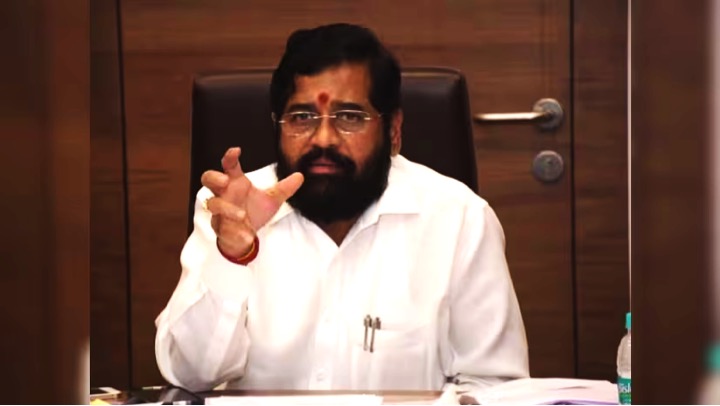India’s retail inflation slid to an 18-month low of 4.7% in April, staying below the Reserve Bank of India’s 6% tolerance threshold for price rise for the second successive month, aided by the base effects from last April when it had hit an eight-year high of 7.8%.
Price rise faced by urban consumers cooled to 4.85% in April from 5.9% in March, while it moderated from 5.5% to 4.7% for their rural counterparts. Inflation as per the Consumer Food Price Index eased to 3.84% last month from 4.8% in March.
Economists emphasised that the base effects from April 2022 were visible in cooling inflation across all broad segments. However, higher inflation in pulses and personal care products as well as persistent sharp upticks in prices of items like cereals and milk pose a worry even as vegetable prices are expected to see a seasonal surge.
On a sequential basis, the Consumer Price Index (CPI) grew 0.5% over while food prices rose 0.6% from March levels, double the month-on-month rise from February to March, when the headline retail inflation on a year-on-year basis was pegged at 5.66%.
While vegetable prices continued to fall year-on-year, dropping 6.5% in April, they were up 1.8% over March 2023 prices. Edible oils and fats’ prices witnessed deflation for the third successive month, falling a sharp 12.33% from April 2022, when the immediate aftermath of the Russia-Ukraine conflict had led to a global supply shock.
“The 4.7% inflation print in April not only benefited from the high base but also the cooler than normal temperatures last month, which delayed the seasonal rise in prices of perishable items and helped keep prices of some vegetables under check,” said Aditi Nayar, chief economist at ICRA.
Milk and milk products’ inflation eased only marginally from 9.3% in March to 8.85% in April, as was the case for cereals (down from 15.3% in March to 13.7% in April), and spices that cooled slightly from 18.2% to 17.4% in April.
“The sequential price momentum in items like milk and pulses remains a concern,” said CARE Ratings chief economist Rajani Sinha, who expects retail inflation to remain below 5% till June and average 5.1% for 2023-24. “Weather-related disruptions could be the main threat to food inflation and the overall CPI inflation,” she reckoned.
Bank of Baroda chief economist Madan Sabnavis said price pressures are visible in pulses as well, whose inflation rose to 5.3% in April from 4.3% in March.
“As traders wait for the new crop in October, there will be pressure on prices and inflation will be on the higher side till then. The monsoon prospects are critical here as pulses are vulnerable given limited access to irrigation,” he noted.
There was a consensus among economists that the central bank would continue its pause on interest rate hikes, emboldened by the moderation in headline inflation, but rate cuts remain unlikely amid worries about the monsoon and the Kharif crop.
“With a dip in the CPI inflation below 5% and surprisingly subdued industrial output growth (at a five-month low of 1.1% in March, we foresee a high likelihood of a pause from the RBI’s Monetary Policy Committee in its next meeting. However, a pivot to rate cuts appears quite distant,” Ms. Nayar said.
While fuel and light inflation fell sharply from 8.9% in March to 5.5% in April, clothing and footwear price rise eased slightly from 8.2% to 7.5% in April. Inflation in personal care and effects sped to 9% in April from 8.25% in March, and education inched up from 5.42% to 5.7% in April. The pace of price rise in health costs and household goods and services remained elevated at 6.3% and 6.5%, respectively, in April.
Industrial output skids
Industrial output growth dropped to a five-month low of 1.1% in March 2023 moderating sharply from 5.8% in February, with electricity, consumer durables and non-durables recording a contraction from a year ago, and manufacturing growing just 0.5%
Mining output grew 6.8% in March, while capital goods and infrastructure/goods production rose 8.1% and 5.4%, respectively. Primary goods’ output growth, however, more than halved from 6.9% in February to 3.3% in March. Intermediate goods grew at a tepid 1.1% pace, but this constituted a three-month high after a growth of 0.5% in January and 0.7% in February.
Electricity generation contracted 1.6% in March, marking the first decline in at least a year. The dip in power output follows three months of 10%-plus growth from November 2022 and an 8.2% uptick this February.
For the full year 2022-23, India’s industrial production was up 5.1%, compared to a 11.4% rise in 2021-22. Electricity generation rose 8.9% in the year with mining and manufacturing, rising 5.8% and 4.5%, respectively.
Consumer durables’ output shrank for the fourth month in a row, with the decline widening to a three-month low of 8.4%. Consumer durables production had dropped 11.2% in December, 8.2% in January and 4.07% in February.
Overall consumer durables as well as consumer non-durables’ output grew just 0.5% in 2022-23. The latter saw the first contraction in production in March over a five-month span, dipping 3.1%. Both these segments had registered declines in March 2022 as well, with durables shrinking 3.1% and non-durables dropping 4.4%.
Split by end-use, capital goods grew the fastest in 2022-23 at 12.9%, followed by infrastructure/construction goods (8%) and primary goods (7.4%). Intermediate goods rose 3.7%, compared to 15.4% in 2021-22.
“The Index of Industrial Production or IIP growth of 1.1% in March is a major disappointment as we had expected a better number of 3.5%,” said Madan Sabnavis, chief economist at Bank of Baroda. “The usual year-end phenomenon of production being ramped up in March did not happen this time. The IIP numbers also don’t gel with the Purchasing Managers’ Index (PMI) indicators, so we need to view the PMI readings with caution,” he emphasised.



























